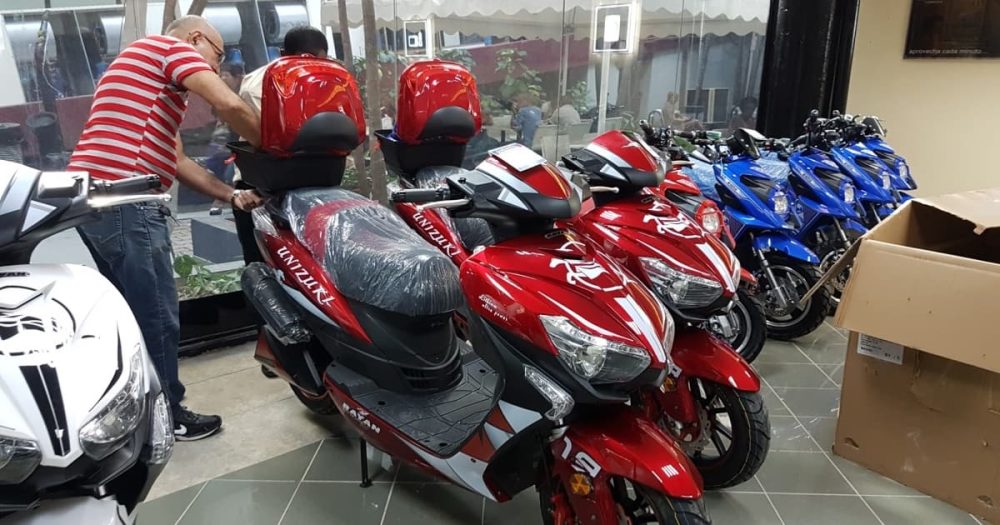With rising fuel costs and shortages across Cuba, the island nation has turned to electric motorcycles en masse. Nowhere is that more apparent than on the streets of Havana.
The rise in electric motorcycle usage is largely thanks to government policy, which has regulated the pricing of electric motorcycles while placing limits on imports of gasoline-powered motorcycles.
Due to pricing policy, electric motorcycles were cheaper than gasoline-powered motorcycles for years. Eventually the government outlawed the import of gasoline-powered motorcycles all together, leaving electric as the only option for new purchases.
Pricing regulation has kept them affordable for citizens and has helped the electric two-wheelers become a dominant form of transportation in the country.
Estimates put the total number of electric motorcycles, locally referred to as motorinas, at around 300,000. To put that in comparison, there are around 500,000 cars registered in Cuba, according to ABC News.

The most popular format for electric motorcycles in Cuba is an electric scooter. These types of motorcycles provide extra utility with step-through frames that are also useful for carrying extra stuff, especially odd-shaped cargo.
Almost all of the electric two-wheelers come from China and are imported through Panama. But a locally produced model known as the Minerva is said to be in the works at an old bicycle factory.
While electric motorcycles were already gaining in popularity in Cuba, the local fuel shortages have continued to push more citizens toward electric motorcycles instead of gas-powered cars. As local rider Alejandro Vasallo explained:
Fuel is a lost cause, you have to look for it and queue up. Right now having an electric motorcycle here is life itself.
This isn’t the first time Cubans have turned to electric motorcycles during fuel shortages. Back in 2019 we reported on a similar scenario where fuel shortages and spiking gas prices sent riders onto the backs of electric motorcycles. But that time it was largely everyday citizens who were taking advantage of free electric motorcycle taxi rides.
The Cuban government called on private electric motorcycle owners to help and the riders answered the call, volunteering to ferry people around cities in an unofficial electric motorcycle taxi service.
According to Javier Capote, one of the electric motorcycle drivers:
We have volunteered to do this as a service to society. It is going very well. We are very happy about it.
After the fuel shortage hit and the Cuban government saw the impact that electric motorcycles had for its citizens, price caps were set on electric motorcycles. That allowed them to be purchased for a maximum of $1,700 at the time and their popularity skyrocketed on the island nation.
Now they are turning into a dominant form of transportation, rivaling the number of cars on the streets in many areas of Havana.
Electrek’s Take
This kind of seems like an inevitability to me. It’s where all cities should head, and in fact where many are already well on their way. Cuba just got an extra quick shove in the right direction thanks to the heavy hand of the Cuban government.
Cars don’t fit well in cities, period. Cities weren’t built for cars. That’s why most have almost nowhere to safely walk, since streets have had to expand to fill almost the entirety of spaces between buildings.
Smaller-format vehicles like electric motorcycles are simply the correct way to reduce the physical space demanded for driving and parking larger vehicles. They are less of a danger to pedestrians than 4,000-lb. vehicles and they don’t pollute the air we all share. Bicycles (and e-bikes) would also be a great solution and should be part of the mix, but electric motorcycles are more helpful for larger streets and roads where the speed of traffic is higher.
Hopefully, this ratio of electric motorcycles to cars expands to other Western countries as well. It’s about time.
Read the full article here



